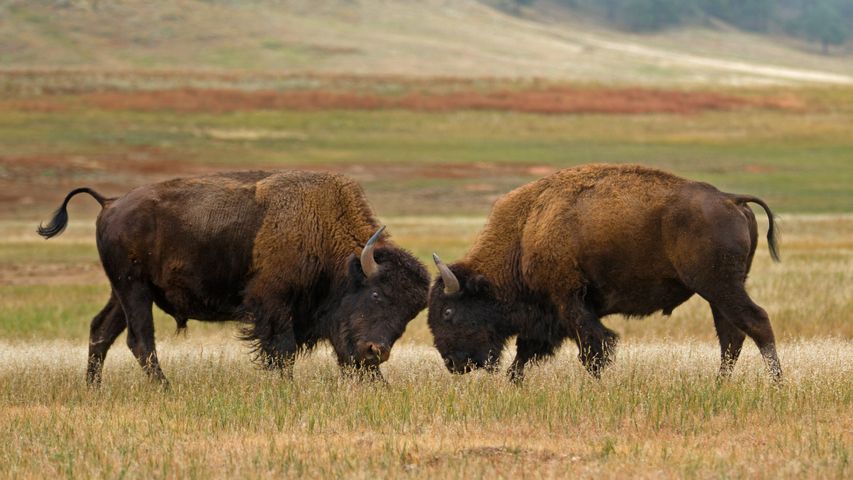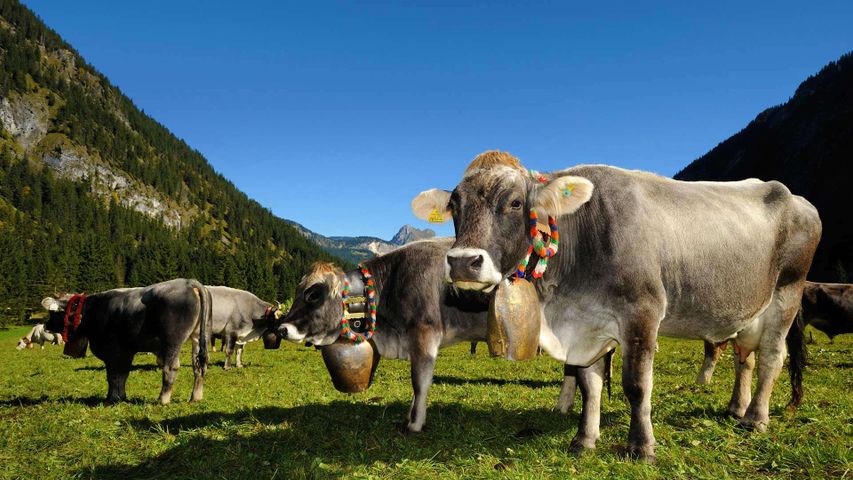Male American bison in Yellowstone National Park, Wyoming
© Donyanedomam/Getty Image
Oh, give me a home. National Bison Month
July is National Bison Month and we've chosen today to honor America's official and largest land-dwelling mammal. The male American bison in today's photo is lazing among wildflowers in Yellowstone National Park, the only place in the country where there's been a continuous population of bison since prehistoric times. Once widespread across the American plains and revered by Native Americans, they numbered in the tens of millions. Tragically, settlers hunted the bison nearly to extinction by the late 1800s. Fewer than 1,000 of the giants were left in 1905 when the American Bison Society was formed to save them. These days, the population has stabilized with a little more than half a million bison spread across the country, with a few thousand living freely on the plains at Yellowstone.
You may know this majestic bovine as a 'buffalo,' which, depending on who you ask, can be considered an incorrect name. Believed to originate from the French word for beef ('boeuf'), 'buffalo' was first attributed to the beast as early as 1616. The word 'bison' didn't see use until 1774, but now it's the term preferred by most scientists. Some argue that the only 'true' buffaloes are the species of water buffalo originating in Africa, the Indian Subcontinent, and Southeast Asia.
American bison, due to near extinction, are mostly genetic hybrids, the result of bison mated with domestic cattle. These hybrids are commonly known as 'beefalo.' Only about 5% of American bison are genetically 'pure,' which includes the population at Yellowstone and another at Elk Island National Park in Canada. No matter what you call them, the bison is a noble creature worthy of awareness and conservation.
Related Images
Bing Today Images




 Southern white rhinoceros males, Shamwari Private Game Reserve, South Africa
Southern white rhinoceros males, Shamwari Private Game Reserve, South Africa
 Elephant family in Amboseli National Park, Kenya
Elephant family in Amboseli National Park, Kenya
 Wildebeests in the Maasai Mara National Reserve, Kenya
Wildebeests in the Maasai Mara National Reserve, Kenya
 Bison in Wind Cave National Park, South Dakota
Bison in Wind Cave National Park, South Dakota
 American bison in Yellowstone National Park, Wyoming
American bison in Yellowstone National Park, Wyoming
 Cows decorated for the Almabtrieb in Tannheimer Tal, a valley in Tyrol, Austria
Cows decorated for the Almabtrieb in Tannheimer Tal, a valley in Tyrol, Austria
 Male muskoxen near Prudhoe Bay in Alaska
Male muskoxen near Prudhoe Bay in Alaska
 Highland cattle in Drenthe province in the Netherlands
Highland cattle in Drenthe province in the Netherlands

